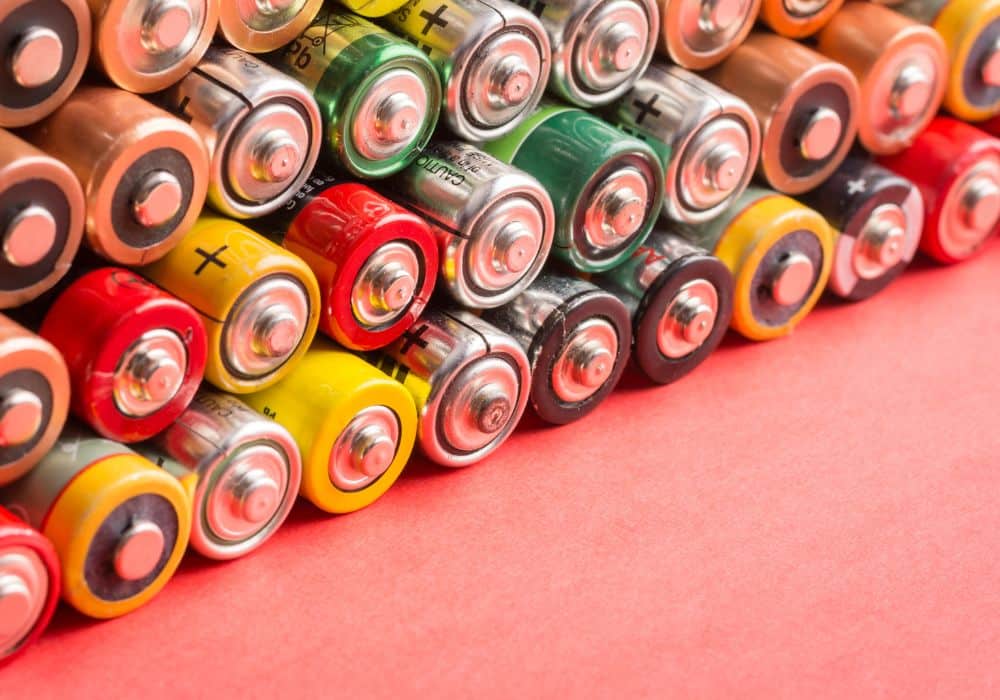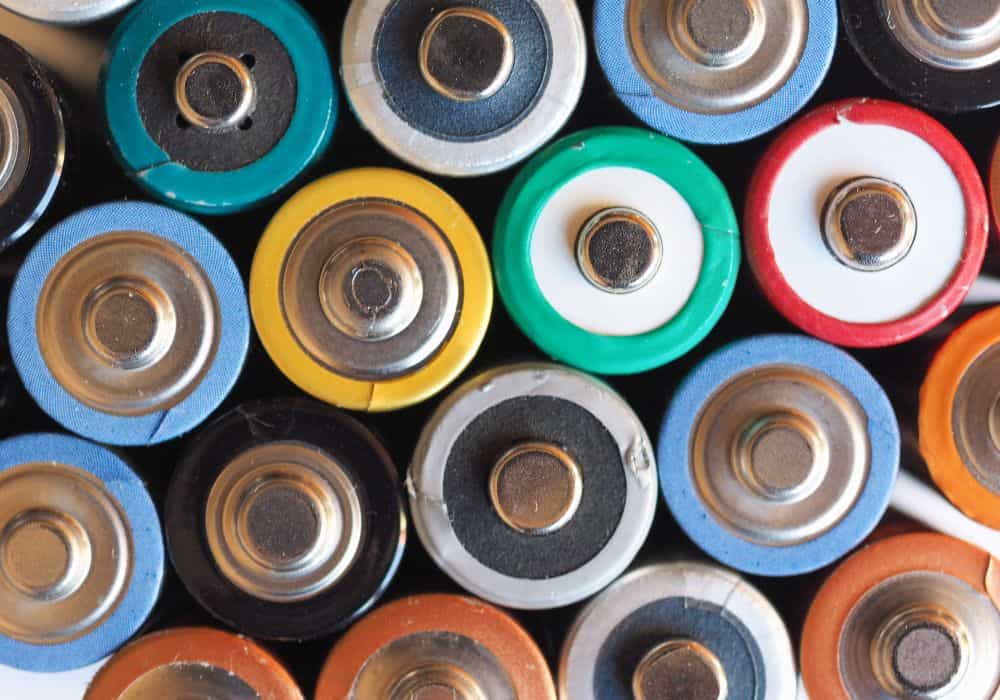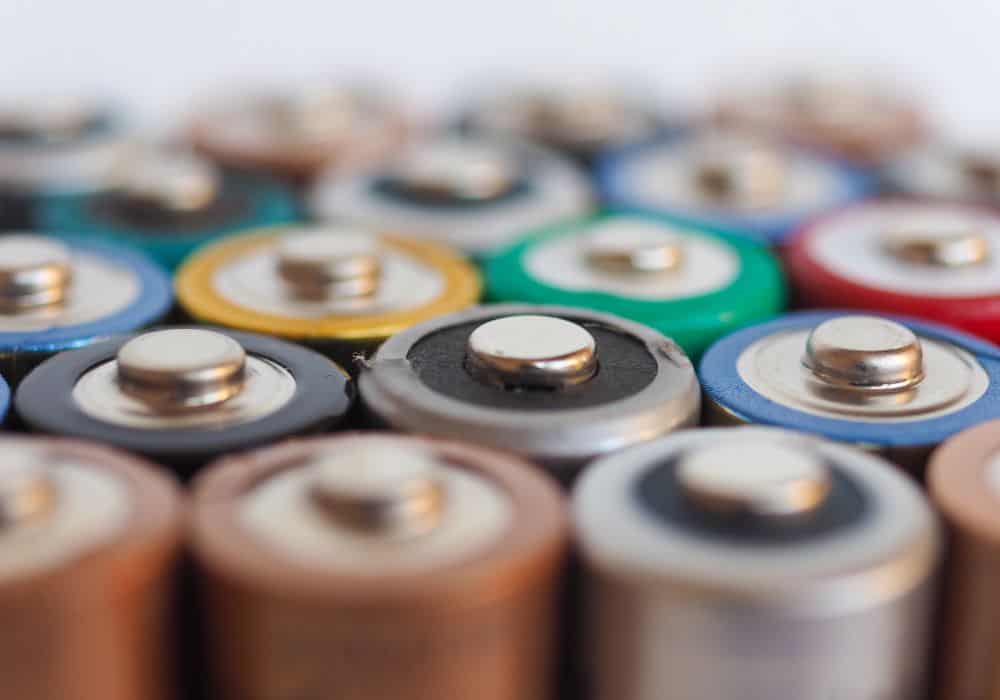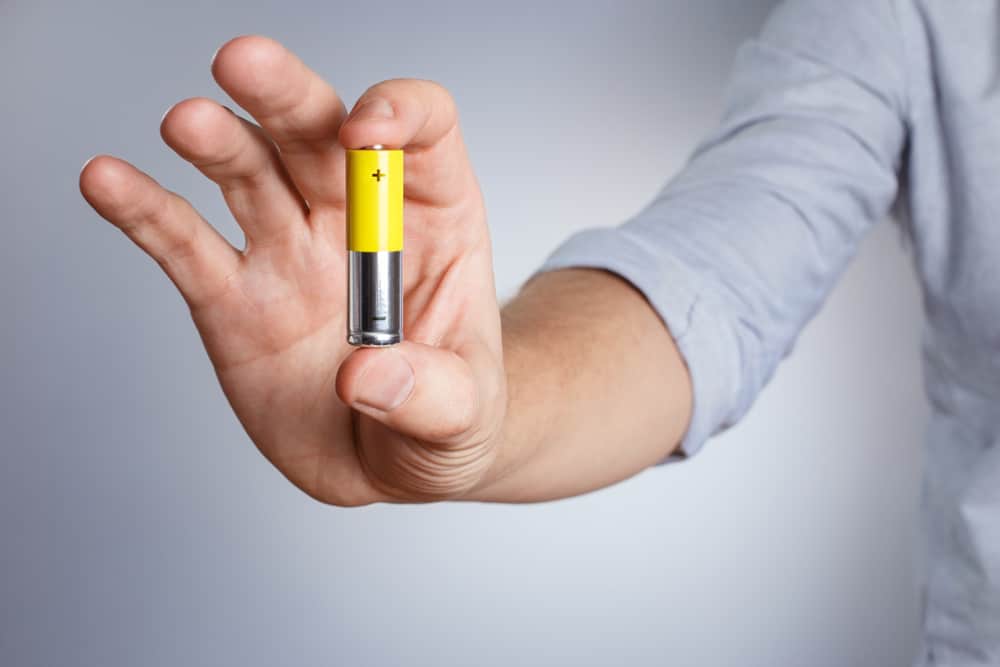AA batteries are the most commonly used in portable electronic devices like flashlights, remote controls, toys, smoke alarms, etc. These batteries come in different voltages and amp-hour ratings.
Please keep reading to know the different types, their characteristics, and in particular, different AA battery voltages.
Table of Contents
Common Terms To Know
Getting familiar with the basics and relevant terminology is crucial if you want to understand the characteristics of these batteries. An AA battery produces electrical energy from an electrochemical reaction when the negative and positive terminal is connected through a circuit.
1. Voltage
It accounts for the pressure capable of pushing electricity through the cell. A higher voltage translates to more energy flow.
2. Amperage
It’s the amount of current the battery can provide. Batteries with a high ampere rating can offer more power for electronic devices. For example, a TV remote control may require a nominal amperage, whereas a digital camera requires a higher amperage.
3. Watt Hours
This term measures the energy a battery can provide for a specific period. The watt-hours of a battery can be calculated by measuring the voltage with the ampere-hour rating.
Understanding AA Battery Types And Voltage

There are several types of batteries, like alkaline, lithium, and NiCd batteries, to name a few. Likewise, batteries come in a variety of different sizes, including the most common AA battery, AAA batteries, D batteries, 23A batteries, etc.
You can find AA-size batteries for nearly every type, excluding zinc air batteries. These AA batteries have a standard nominal voltage of 1.5 and a maximum voltage of 3.7 volts.
Typically, AA batteries also have an amperage of 0.01 and 0.02 amperes. Without further ado, let’s review the different types of AA batteries available out there.
Non-Rechargeable AA Batteries
- Zinc Carbon Batteries
It’s a highly inexpensive non-rechargeable battery providing 1.5 V output voltage and 600 to 1600 ampere-hours battery capacity. These batteries have a low energy density and poor battery chemistry.
- Alkaline Batteries
While the AA size in alkaline batteries provides a similar voltage of 1.5 V, this type has replaced zinc oxide batteries due to a longer shelf life and a higher amp-hour rating ranging from 1800 to 2700 mAh.
The reaction between zinc and manganese oxide in the battery produces the electrical energy required to power up your electronic device.
These alkaline AA batteries provide the best value as they work well in extreme temperatures, are free of toxic metals, and have a shelf life of up to 10 years.
- Nickel Oxy-hydroxide Batteries
Think of these batteries as a tweaked-up variant of alkaline batteries. Rather than containing only graphite and manganese dioxide, this type has nickel oxyhydroxide included in its composition.
NiOOH batteries provide a maximum voltage of 1.7 volts and a stable 1.5 V voltage with high-drain use.
- Lithium AA Batteries
Li-ion batteries are divided into three types, each with a different composition, voltage output, and milliamp-hour rating.
- Lithium Thionyl Chloride Batteries
This lithium battery provides a stable open circuit voltage of 3.65 V and a minimum voltage of 3.5 V. The battery has a high capacity ranging between 2400 to 2700 mAh. Besides having a good energy density, these batteries can be stored for up to 20 years.
Lithium thionyl chloride batteries are not compatible with electronic devices requiring 1.5 volts and can lead to a malfunction.
- Lithium Iron Disulfide Batteries

Although these AA lithium batteries provide a voltage of 1.5 volts, their energy density can go up to 3300 mAh. This energy capacity and density make the battery feasible for high-drain devices that need a constant energy supply. Their open circuit voltage is 1.8 V.
While zinc oxide and alkaline batteries don’t work well with high-drain electronics, lithium iron disulfide batteries are good for cameras, flashlights, security, and backup devices.
- Lithium Manganese Dioxide Batteries
With a capacity of 2000 mAh and a cutoff voltage of 2 V, lithium manganese dioxide batteries provide a nominal voltage of 3 V. These batteries don’t involve the use of toxic chemicals like lead, mercury, and cadmium.
The different types of lithium-ion batteries provide different voltages and fulfill different requirements. It’s best to know the watt-hours of your electronic device. As mentioned earlier, you can multiply the voltage by amperage.
For example, if you have a 12 V battery with a 2000 mAh capacity, the watt hours would be 24 Wh. This means the battery can provide 24 watts of power for an hour.
Rechargeable AA Batteries
- Rechargeable Alkaline Manganese Batteries
These are not the standard alkaline batteries and are designed to be recharged and used multiple times. They provide a voltage of 1.5 volts and the same amperage as non-rechargeable alkaline batteries.
- Nickel-Cadmium Batteries
Although an older type of rechargeable battery, these batteries have a high self-discharge rate. The AA size NiCd battery voltage is 1.2 volts and has an amp-hour rating of 600 to 1000 mAh. The cells have a strong memory effect and can provide stable currents without affecting functionality.
For example, your flashlight will dim when alkaline batteries are about to deplete. On the other hand, a flashlight using NiCD batteries will have a constant and bright beam even when the battery is about to die.
While NiCd batteries are compatible with several everyday electronics, their only downside is the toxic cadmium metal required for an electrochemical reaction.
- Nickel Metal Hydride Batteries
Rechargeable NiMH batteries have the same 1.2 volts voltage and a slightly higher amperage between 700 to 1500 mAh. Newer NiMH high-drain batteries can even provide an amperage of 2800 mAh.
Nickel metal hydride batteries have a low discharge rate, ensuring a higher capacity and enough juice to keep your electronics running with optimum functionality.
- Lithium-ion 14500 Batteries

These batteries have similar dimensions to AA batteries but have different characteristics. While you’d expect a nominal voltage of 1.5 V, the lithium-ion 14500 is a 3.7-volt battery. Depending on the intended use, its capacity ranges between 600 to 2500 mAh.
This type can be tweaked according to the electronic device’s requirements. Using these batteries in a device requiring 1.5 volts will result in malfunction. Li-ion 14500 is specifically designed to monitor its performance.
The battery is capable of preventing overheating and overcharging. Furthermore, each battery has a dedicated charging port, making it convenient to charge individual batteries.
Difference Between AA and AAA Batteries
While you can find similar voltage and amperage in both types, the main difference is their physical dimensions. AAA batteries are slightly thinner than AA batteries.
On the other hand, AA batteries have large volumes, allowing the storm to have a larger capacity and the ability to provide strong currents to run the electronic device stably.
Common Misconceptions
A higher voltage doesn’t always mean how many amperes the battery has. Voltage and amperage do not influence each other. You can have a high-voltage battery with low amperage and vice versa.
Batteries with high amperage don’t increase the watts of energy the battery can provide.
FAQ
1. What’s The Best AA Battery Type?
It all depends on the device being powered. Some devices may require a low capacity but a high voltage, whereas others may require a low voltage but a higher milli-amp rating.
However, when it comes to non-rechargeable batteries, alkaline batteries are more inexpensive and reliable than zinc-carbon batteries.
2. Does Temperature Affect The Performance of AA Battery?
Suppose the electronic device you are powering is intended to be used in extreme temperatures. In that case, it’s best to pick a lithium-ion battery as it can easily tolerate drastic temperature changes without decreasing the capacity.
The watt-hour rating of the AA battery decreases with reduced temperatures. Extremely high temperatures can also cause the batteries to leak or malfunction, rendering them useless.
Using This Information
Now that you know the exact voltage, amperage, and watt-hour rating of different AA batteries, this information can be utilized to find the most compatible battery for your device.
For example, if your electronic device uses 0.01 amps and 1.5 volts, a single alkaline AA battery can provide enough juice for 24 hours. Likewise, for a device requiring 0.02 amps, the AA battery can run the device for 12 hours.
Bottom Line
When searching for an AA battery, ensure you know the exact voltage and amperage required to power the electronic device. While some devices may run using a higher voltage AA battery, it’s best to stay within the recommended voltage to ensure maximum performance and safe use.
To avoid malfunction, ensure you know the required battery type specified by the manufacturer. For example, if a digital camera manufacturer mentions using a NiMH battery, putting in a lithium-ion battery would only result in poor functionality or damage to the electronic device’s components.
Despite being designed to be used for several years, AA batteries can malfunction. This fault can result in a decrease in the battery voltage and amperage over time.
Running electronic devices like remote controls on a lower voltage may not be an issue, but using batteries with a low voltage output in voltage-sensitive devices will only damage them.
We hope you can use the presented information to quickly know the voltage of every AA battery out there.
